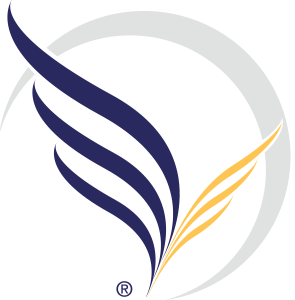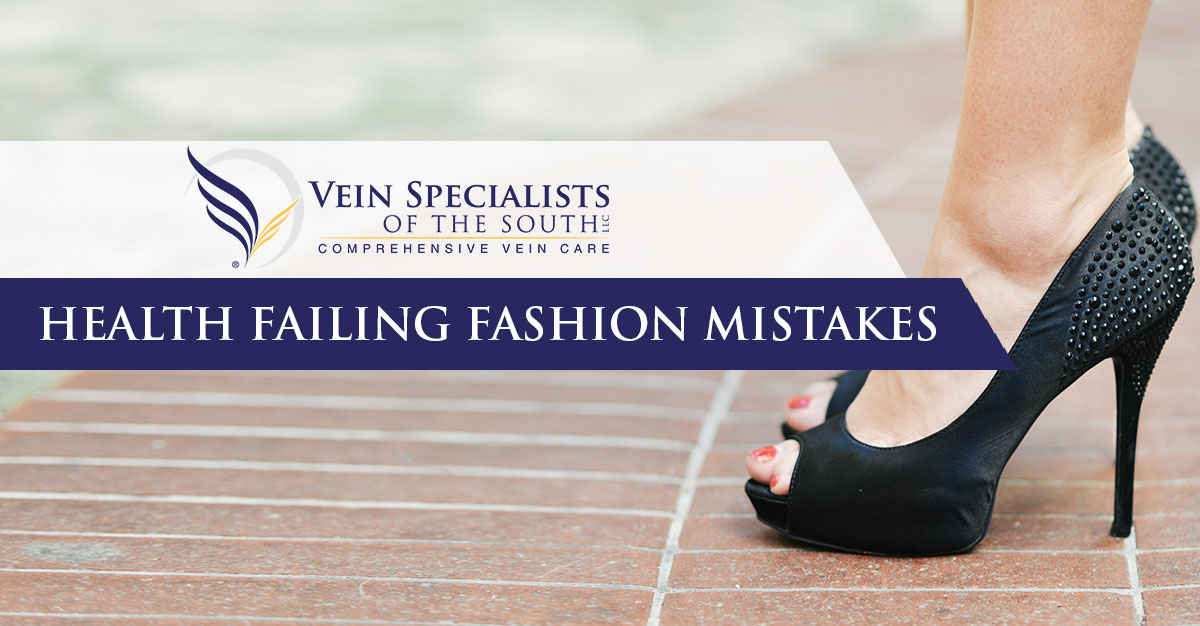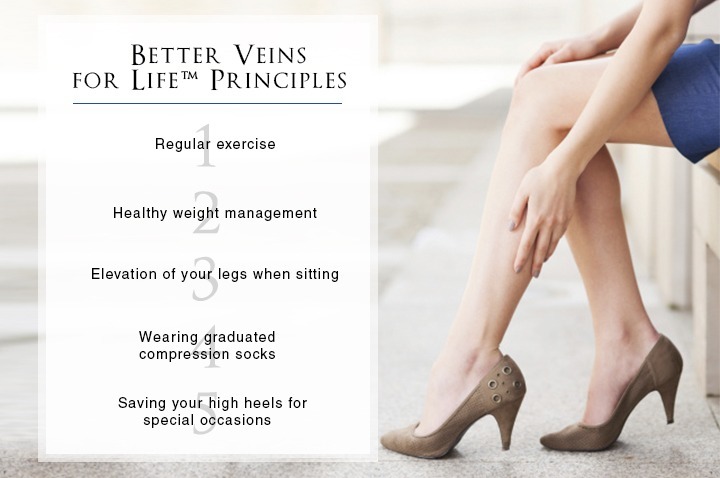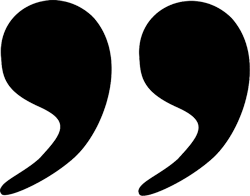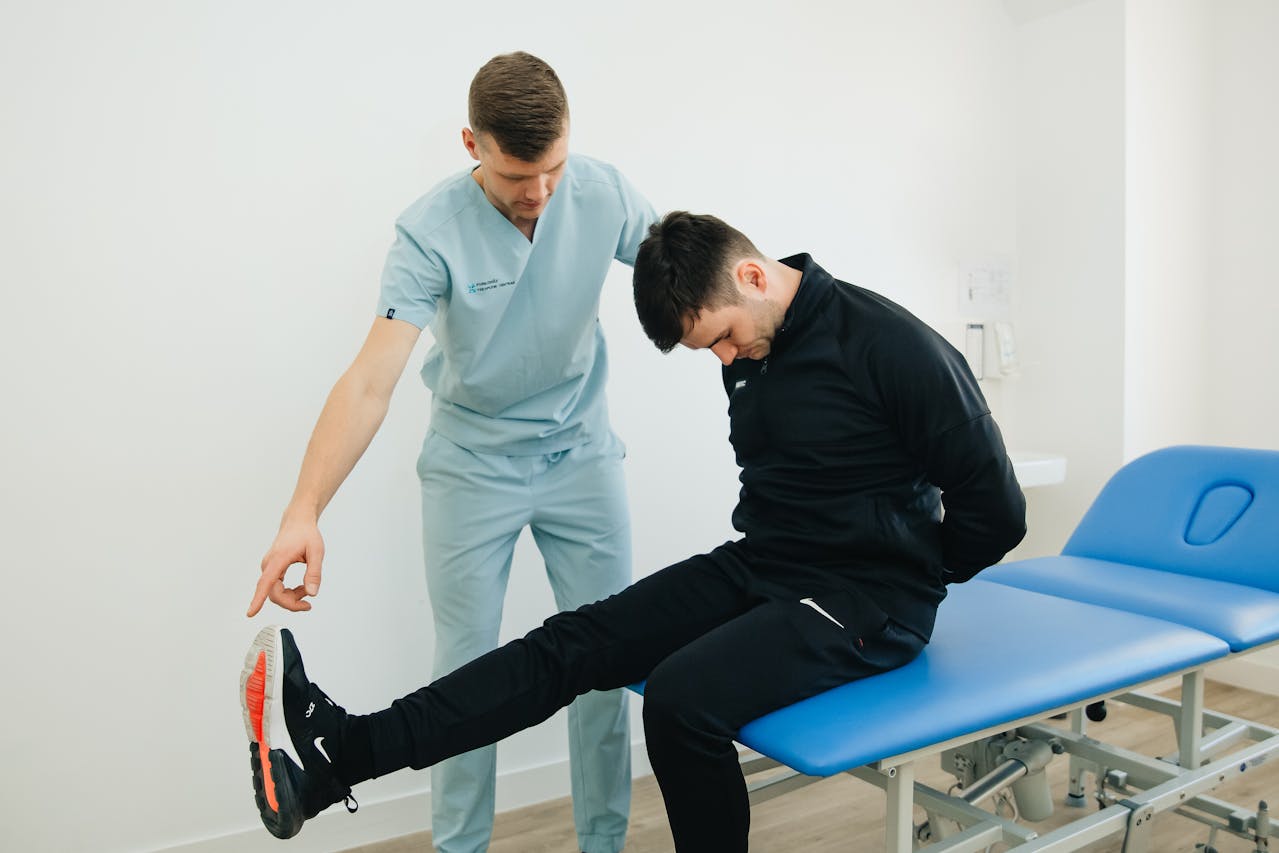Few things are more exhilarating and sexy than wearing a great new pair of heels to showcase your legs and make your calf muscles pop, all while looking and feeling taller and more confident. But, could it be negatively affecting your vein health?
The way our body is designed is fascinating. Arteries carry the blood with its nutrients and oxygen to the cellular level and the veins carry the used blood with its carbon dioxide and byproducts of metabolism back to the heart, lungs and other vital organs where the cycle begins anew.
Unfortunately, high heels – along with other types of clothing like tight jeans or other fabrics that don’t let your skin breathe – can cause a variety of health concerns later in life. Some of these common health issues include blood clots, spider veins, and varicose veins.
What Do High Heels Have To Do With Veins?
Veins are a part of the circulatory system. Healthy venous blood flow returns the blood to the heart and lungs. The venous system is made of pipes, pumps and valves working together to propel blood back to the heart against the effects of gravity.
The veins are the pipes that carry the blood. Conditions that dilate, stretch or block the veins or pipes lead to venous congestion in the legs.
Since we spend most of our waking hours sitting or standing, the venous pumps are needed for healthy blood flow from the legs back to the heart overcoming the effects of gravity. The natural walking motion of the foot, ankle and calf muscles are the ‘venous pumps’ that propel blood up the veins. Anything that alters the pumps diminishes the blood flow and allows blood to pool in the leg veins.
As venous blood is pumped up the leg veins, check valves prevent the blood from refluxing or falling back down when the muscles relax. If these check valves do not close properly when the muscles relax, reflux occurs.
Compromise of the pipes or valves can lead to the signs and symptoms of venous disease. So what is the big deal with high heels? It has to do with the calf muscle pump. The venous blood flows into the calf veins when the calf muscles relax during the walking motion and the blood is propelled up the calf veins when the muscles contract. High heels keep the calf muscles in a state of contraction preventing maximal filling of the calf veins and diminishing the effectiveness of the calf pump.
High Heels And Blood Clots
The blood clotting system is a good thing allowing the body to heal from cuts, scrapes other injuries. Clotting prevents excessive blood loss, which can save your life. However, when circulation slows down, like it may when you wear high heels, the blood can pool and the risk of clots in the veins increases. This can sometimes cause a life threatening condition called Deep Vein Thrombosis (DVT). If left untreated, blood clots can lead to more severe issues like Pulmonary Embolism (PE), stroke, pain and ruptured veins. High Heels and Varicose Veins and Spider Veins
When you sit or stand for long periods of time, or put additional, continuous strain on your legs, varicose veins and spider veins can form. Spider veins are largely a cosmetic problem, and not a serious medical concern. Early on, venous reflux and varicose veins may not be associated with symptoms, but other times they progress causing a cascade of symptoms that affect quality of life and the ability to perform normal activities of daily living.
Women are more prone to develop varicose veins and spider veins than men, mostly because of hormone fluctuations and weight gain during pregnancy. However, wearing high heels too often doesn’t help. If you already have vein reflux or are at a high risk for developing vein disease (inherited, multiple pregnancies, occupational risks), high heels can speed up the development of these unsightly spider and varicose veins.
Fortunately there are some things you can do to for your vein health. At Vein Specialists of the South we promote our “Better Veins for Life” principles:

